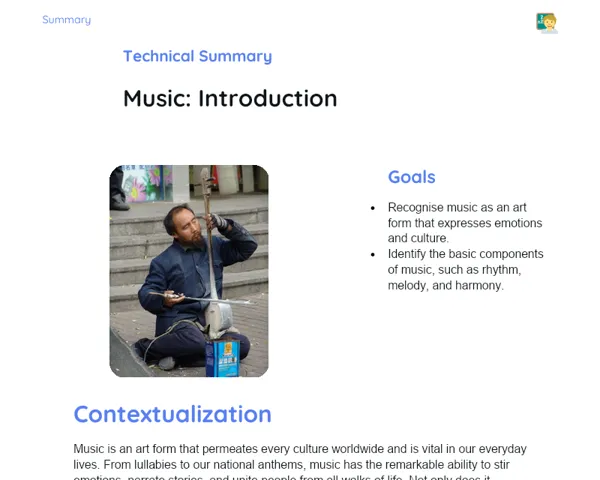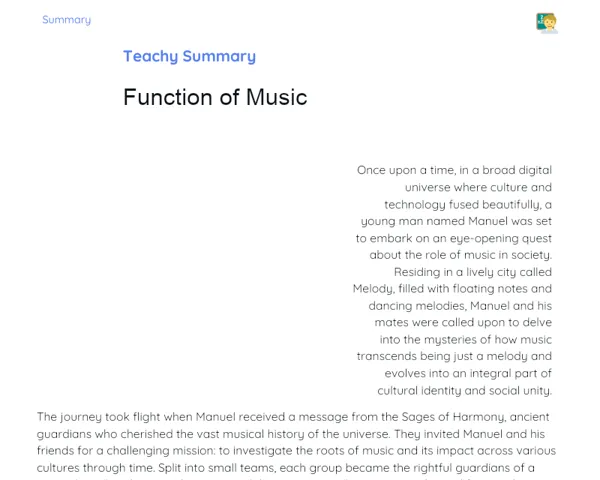Socioemotional Summary Conclusion
Goals
1. Understand the Renaissance as a humanist movement that drew inspiration from classical antiquity.
2. Identify and analyze the main representations of the Renaissance in European paintings and frescoes.
Contextualization
Did you know that the Renaissance was akin to a 'great awakening' of culture and intellect across Europe? 🌍 Picture a time when artists rediscovered the beauty and intricacies of the human form, experimented with new techniques like perspective, and created masterpieces that continue to inspire us even today. Let’s delve into this captivating world where art mirrored the deep emotions and thoughts of its creators, and explore how these artistic expressions still resonate in our lives today!
Exercising Your Knowledge
Definition of the Renaissance
The Renaissance was a cultural movement that unfolded in Europe roughly between the 14th and 17th centuries. It was defined by a renewed interest in the values of classical antiquity, such as a newfound appreciation for knowledge, art, and science. This period heralded a shift in perspective where humanity and its capabilities were placed right at the forefront.
-
Rediscovery of classical values: The Renaissance sought inspiration from Greco-Roman culture, emphasizing reason, beauty, and harmony.
-
Anthropocentrism: Humanity began to be viewed as the centre of the universe, with boundless potential for creativity and transformation.
-
Artistic and scientific development: This era was characterized by significant advancements in both the arts and sciences, leading to an unparalleled cultural flourishing.
Historical Context
Several historical events contributed to the rise of the Renaissance, including the fall of Constantinople, the invention of the printing press, and the financial backing of prominent families like the Medici. These occurrences created a conducive environment for the spread of Renaissance ideas throughout Europe.
-
Fall of Constantinople: In 1453, the Ottoman Turks captured Constantinople, prompting many Greek scholars to escape to Italy with classical manuscripts.
-
Invention of the printing press: Gutenberg’s invention of the printing press in 1440 enabled the rapid distribution of ideas and knowledge.
-
Medici patronage: Florence’s Medici family supported numerous artists and intellectuals, fostering the growth of the arts and sciences.
Main Characteristics
The Renaissance introduced a number of innovations and distinctive traits, such as humanism, linear perspective in art, a keen interest in human anatomy, and a respect for reason and science. These characteristics profoundly shaped Renaissance art and significantly impacted society at that time.
-
Humanism: This intellectual movement championed the study of classical works, placing humanity at the heart of philosophical and artistic Inquiry.
-
Linear perspective: An artistic technique that creates an illusion of depth and three-dimensionality in paintings, revolutionizing visual representation.
-
Interest in anatomy: A meticulous study of the human body, leading to more accurate and lifelike representations in art.
-
Valuation of reason and science: The Renaissance encouraged the exploration and application of scientific knowledge, challenging religious and superstitious views.
Key Terms
-
Renaissance: A European cultural movement of the 14th to 17th centuries, highlighting a revival of classical antiquity values.
-
Humanism: An intellectual movement focusing on classical studies, centering humanity in philosophy and art.
-
Linear Perspective: An artistic technique creating depth and a three-dimensional feel in visual works.
-
Patronage: Financial support of artists and thinkers by wealthy families or institutions, crucial for fostering the arts during the Renaissance.
For Reflection
-
How can the study of human anatomy by Renaissance artists enhance our understanding of self-knowledge and respect for the human body?
-
In what ways can Renaissance anthropocentrism motivate us to value our own abilities and talents, fostering a more positive self-image?
-
How might the artistic innovations from the Renaissance, such as linear perspective, teach us to appreciate different viewpoints and see the world through varied lenses?
Important Conclusions
-
The Renaissance was a significant cultural movement in Europe from the 14th to the 17th centuries, marked by a revival of classical antiquity values.
-
Humanism underscored the importance of classical studies, prioritizing humanity in its core discussions.
-
Artistic innovations like linear perspective transformed visual representation in art.
-
Patrons, such as the Medici family, were pivotal in advancing the arts and sciences during the Renaissance.
-
The insights gained from studying the Renaissance help us appreciate the significance of self-awareness and the value of human talents.
Impacts on Society
The influence of the Renaissance remains palpable in today's world. The era's emphasis on knowledge, art, and science continues to shape our society. The importance placed on self-awareness and the recognition of one's own capabilities—central tenets of the Renaissance—encourages us to pursue personal growth and acknowledge the artistic and scientific contributions of every individual.
On an emotional level, learning about the Renaissance enables us to appreciate the deep connection between art and emotion. By examining how Renaissance artists conveyed their feelings through their creations, we can cultivate a greater sense of empathy and understanding concerning human emotions. This understanding is essential for fostering a more cohesive society that respects diverse perspectives and individual experiences.
Dealing with Emotions
To manage your feelings while studying the Renaissance, try this exercise using the RULER method: First, recognise how you feel when observing a Renaissance artwork. Next, contemplate the reason behind that emotion and how it may impact your actions. Properly articulate the emotion—be it admiration, melancholy, or joy. Share this feeling by either writing a brief reflection or sketching something inspired by that artwork. Finally, regulate your emotional response by reflecting on the positive influence that engaging with and appreciating art can have on your life. This practice fosters greater self-awareness and empathy.
Study Tips
-
Set aside daily time to review your notes and reflect on the Renaissance works that have left a mark on you.
-
Take advantage of multimedia resources, like documentaries and virtual museum tours, to deepen your understanding of the Renaissance.
-
Form study groups with peers to discuss and analyse the works and historical context of the Renaissance, facilitating a rich exchange of ideas.



